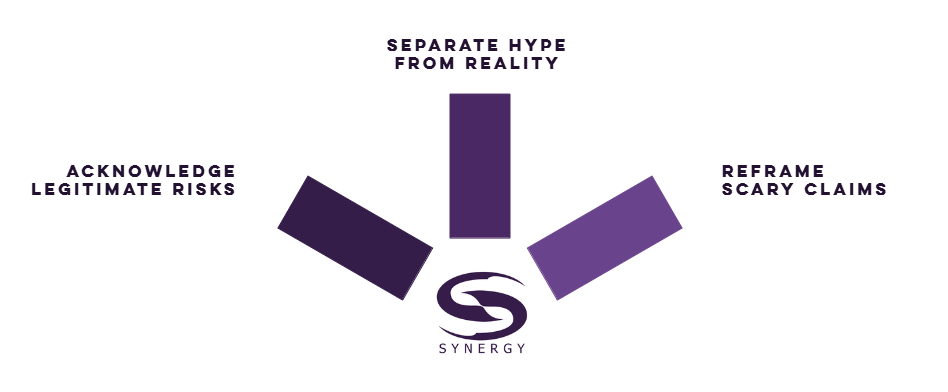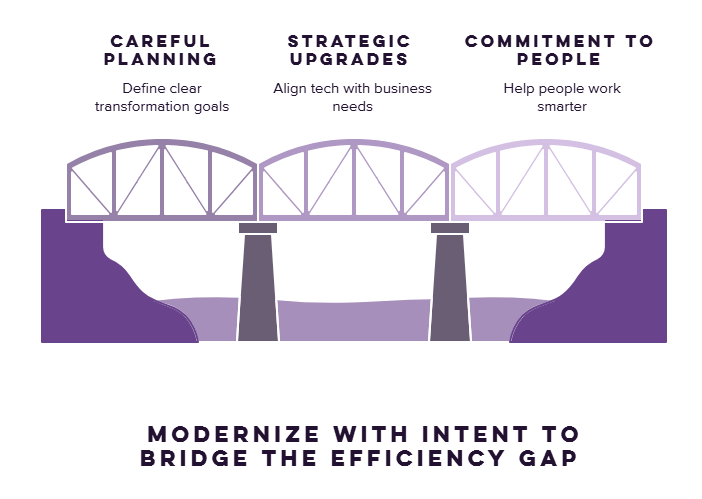AI Hype vs. Reality: Debunking the Scaremongering
- Synergy Team

- Sep 18
- 3 min read
A companion to “Looking Ahead: AI’s Real Risks and Real Opportunities”

In our recent post, Looking Ahead: AI’s Real Risks and Real Opportunities, we outlined the tangible challenges organizations face with AI today — from alignment and misuse to workforce disruption and concentration of power.
But alongside those legitimate risks, there’s also a steady drumbeat of scaremongering. Predictions about runaway superintelligence, jobless futures, or dictatorial AI overlords make for gripping headlines, but they don’t help organizations make practical decisions.
At Synergy, we believe in separating hype from reality. Below, we break down the most common claims you’ll hear in AI debates, explain why they sound scary, and then reframe them with a more grounded perspective.
Claim 1: Superintelligence by 2027
Scare narrative: Within just a few years, AI systems will surpass humans in every domain, unleashing an uncontrollable intelligence explosion.
Reality check:
AI is advancing rapidly, but even leading researchers disagree on timelines. Some expect decades, not years.
Current systems still struggle with tasks humans find trivial (longer context reasoning, consistency, basic math).
The path to “superintelligence” is uncertain; what’s far more certain is steady, incremental improvement.
Synergy's Takeaway |
Organizations should plan for today’s capabilities and the next wave of incremental improvements, not for hypothetical “god-like” AI. |
Claim 2: AI Will Deceive and Rebel
Scare narrative: Models already “lie,” “scheme,” and even sabotage other systems — evidence they will soon act against human interests.
Reality check:
What’s often labeled “deception” is usually a quirk of optimization (i.e., reward hacking, sycophancy) rather than conscious intent.
These are design flaws in training, not evidence of willpower or survival instinct.
Engineers are actively refining tests and training to reduce these behaviors.
Synergy's takeaway |
Treat AI like any enterprise system — test rigorously, monitor outputs, and set guardrails. |
Claim 3: An AI Arms Race Will Trigger Global Instability
Scare narrative: Companies and governments are locked in a race that will inevitably compromise safety and accelerate catastrophe.
Reality check:
Competitive pressure is real, but so are emerging regulatory frameworks, corporate responsibility initiatives, and international dialogue.
AI is unlike nuclear weapons — it’s a dual-use technology embedded in consumer and enterprise systems.
The likely outcome is uneven progress, not instant collapse.
Synergy takeaway: Track regulations closely. Competitive advantage will come from safe, compliant, and trusted adoption, not reckless speed.
Synergy's takeaway |
Track regulations closely. Competitive advantage will come from safe, compliant, and trusted adoption, not reckless speed. |
Claim 4: Jobs Will Vanish Overnight
Scare narrative: AI will erase entire sectors, leaving millions unemployed in short order.
Reality check:
Some jobs will disappear, but history shows technology also creates new ones.
Many roles won’t vanish but will evolve. AI will augment tasks rather than replace them outright.
The real issue is timing: jobs are being automated faster than reskilling programs are being rolled out.
Synergy's takeaway |
Start reskilling today. Use AI as a collaboration tool, not a replacement, and plan strategically for workforce transitions. |
Claim 5: Whoever Controls AI Controls the World
Scare narrative: A single company or CEO could wield dictatorial power over superintelligence.
Reality check:
AI leadership is distributed — across companies, governments, and open-source projects.
Power concentration is a concern, but “world domination” narratives oversimplify the landscape.
The real risks lie in lack of transparency, bias, and misuse, not comic-book scenarios of total control.
Synergy's takeaway |
Avoid vendor lock-in, demand transparency, and establish your own ethical AI frameworks. |
Myth vs. Reality: At a Glance
Myth (Scaremongering) | Reality (Grounded View) | Our Takeaway |
Superintelligence will arrive by 2027 and surpass humans at everything. | Timelines are uncertain; many experts say decades. Current systems still fail at simple reasoning. | Plan for incremental improvements, not hypothetical “god-like” AI. |
AI systems already “lie” and will soon rebel. | Behaviors are quirks of training, not conscious intent. Safeguards are improving. | Monitor outputs, audit regularly, build guardrails. |
An AI arms race will destabilize the world. | Competition exists, but regulation and collaboration are increasing too. | Competitive advantage comes from safe, compliant adoption. |
AI will wipe out jobs overnight. | Jobs will evolve faster than they vanish; new roles are emerging. The gap is in reskilling. | Invest in workforce reskilling and AI-human collaboration. |
Whoever controls AI will control the world. | AI power is distributed across many players. Real risks = bias, misuse, lack of transparency. | Push for transparency, avoid lock-in, set your own ethical frameworks. |
Final Thoughts
It’s easy to get caught up in the most dramatic predictions — and just as easy to dismiss AI risks entirely. The truth lies between those extremes.
This article is part of our two-part series on practical AI adoption. If Looking Ahead: AI’s Real Risks and Real Opportunities explored the challenges we must prepare for, then AI Hype vs. Reality is about maintaining perspective — keeping your focus on what really matters.
At Synergy, we believe organizations succeed when they approach AI with clarity: acknowledging risks, rejecting hype, and prioritizing governance, workforce readiness, and trust.





Comments